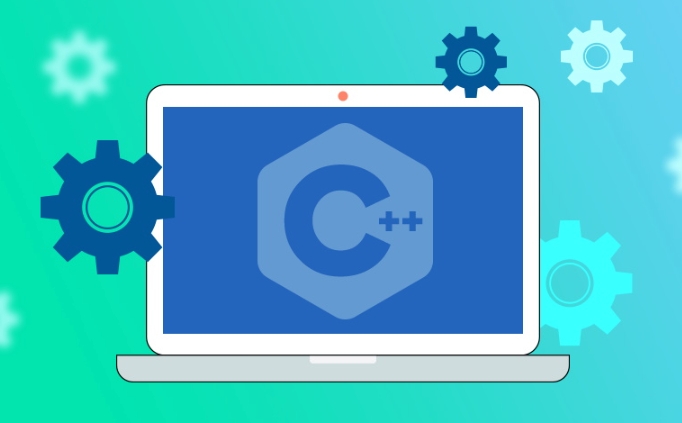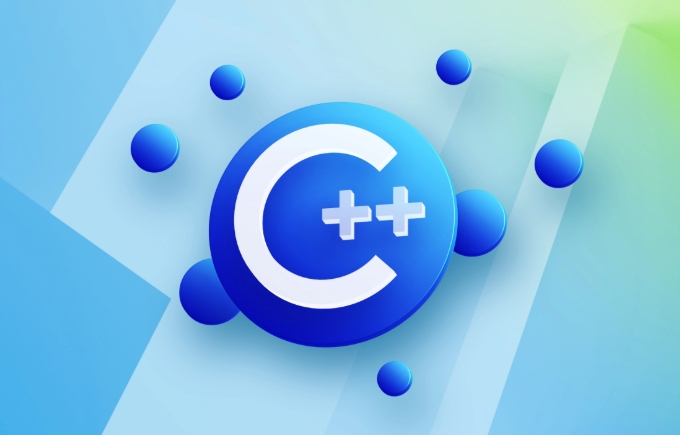In C, the POD (Plain Old Data) type refers to a type with a simple structure and compatible with C language data processing. It needs to meet two conditions: it has ordinary copy semantics, which can be copied by memcpy; it has a standard layout and the memory structure is predictable. Specific requirements include: all non-static members are public, no user-defined constructors or destructors, no virtual functions or base classes, and all non-static members themselves are PODs. For example, struct Point{int x; int y;} is POD. Its uses include binary I/O, C interoperability, performance optimization, etc. You can check whether the type is POD through std::is_pod, but it is recommended to use std::is_trivial and std::is_standard_layout after C 11. When using it, be careful to avoid private members, inheritance, virtual functions and certain constructors to avoid damaging POD characteristics.

In C , a POD (Plain Old Data) type refers to a type that's both simple in its structure and compatible with C-style data handling. These types can be safely copied with memcpy , initialized with {0} notation, and generally behave predictably in low-level operations.

POD types are especially useful when you need interoperability with C libraries or when performance and memory layout matter—like in systems programming, embedded systems, or when working with serialization libraries.

What Makes a Type a POD?
A type is considered a POD in C if it satisfy two main conditions:
- Trivial Copy Semantics : The type can be copied using memory copy functions like
memcpywithout side effects. - Standard Layout : The memory layout of the type follows standard traditions so that it can be accessed predictably across different systems or languages.
Here's what qualifies as a POD:

- All non-static data members are public.
- It has no user-defined constructors or destructors.
- It doesn't have virtual functions or base classes.
- All non-static data members are themselves PODs.
For example:
struct Point {
int x;
int y;
}; This Point struct is a POD because it meets all the above criteria.
Why Are POD Types Still Relevant?
Even though modern C introduces more complex abstractions, POD types remain valuable for specific use cases:
- Binary I/O and Serialization : Since they have a predictable layout, they can be directly written to or read from binary files or network streams.
- C Interoperability : You can pass them to C functions without worrying about name mangling or incompatible layouts.
- Performance Optimization : They're easier for compilers to optimize and are often used in performance-critical code.
If you're building something like a game engine or a device driver, you'll likely encounter situations where sticking with POD types make your life easier.
How to Check If a Type Is POD
You don't always have to guess whether a type qualifies as a POD. C provides a built-in trait for checking this:
#include <type_traits> static_assert(std::is_pod<Point>::value, "Point should be a POD");
However, starting with C 11, the term “POD” became less central. Instead, the language introduced finer-grained traits like std::is_trivial and std::is_standard_layout . So while std::is_pod still exists, you can also test those two properties separately if you want more control.
Practical Use Cases and Common Pitfalls
Some real-world examples where PODs shine include:
- Sending structs over a network without extra serialization logic.
- Memory-mapped hardware registers in embedded systems.
- Sharing data between threads without synchronization overhead.
But beware: once you add things like private members, inheritance, or virtual functions, your type is no longer a POD. That can silently break assumptions in legacy or system-level code expecting POD behavior.
Also, even adding a default constructor like this:
struct Point {
int x;
int y;
Point() = default; // Not allowed for PODs before C 14
};can disqualify your type depending on the C version you're targeting.
So if you're designing a struct and want it to stay compatible with C or memory-sensitive environments, keep it simple. Stick to public fields, no virtual anything, and avoid custom constructors unless you're sure they won't affect the type's triviality.
Basically that's it.
The above is the detailed content of What is a POD (Plain Old Data) type in C ?. For more information, please follow other related articles on the PHP Chinese website!

Hot AI Tools

Undress AI Tool
Undress images for free

Undresser.AI Undress
AI-powered app for creating realistic nude photos

AI Clothes Remover
Online AI tool for removing clothes from photos.

Clothoff.io
AI clothes remover

Video Face Swap
Swap faces in any video effortlessly with our completely free AI face swap tool!

Hot Article

Hot Tools

Notepad++7.3.1
Easy-to-use and free code editor

SublimeText3 Chinese version
Chinese version, very easy to use

Zend Studio 13.0.1
Powerful PHP integrated development environment

Dreamweaver CS6
Visual web development tools

SublimeText3 Mac version
God-level code editing software (SublimeText3)

Hot Topics
 The difference between programming in Java and other languages ??Analysis of the advantages of cross-platform features of Java
May 20, 2025 pm 08:21 PM
The difference between programming in Java and other languages ??Analysis of the advantages of cross-platform features of Java
May 20, 2025 pm 08:21 PM
The main difference between Java and other programming languages ??is its cross-platform feature of "writing at once, running everywhere". 1. The syntax of Java is close to C, but it removes pointer operations that are prone to errors, making it suitable for large enterprise applications. 2. Compared with Python, Java has more advantages in performance and large-scale data processing. The cross-platform advantage of Java stems from the Java virtual machine (JVM), which can run the same bytecode on different platforms, simplifying development and deployment, but be careful to avoid using platform-specific APIs to maintain cross-platformity.
 C in Specific Domains: Exploring Its Strongholds
May 06, 2025 am 12:08 AM
C in Specific Domains: Exploring Its Strongholds
May 06, 2025 am 12:08 AM
C is widely used in the fields of game development, embedded systems, financial transactions and scientific computing, due to its high performance and flexibility. 1) In game development, C is used for efficient graphics rendering and real-time computing. 2) In embedded systems, C's memory management and hardware control capabilities make it the first choice. 3) In the field of financial transactions, C's high performance meets the needs of real-time computing. 4) In scientific computing, C's efficient algorithm implementation and data processing capabilities are fully reflected.
 How to reduce the use of global variables in C?
May 23, 2025 pm 09:03 PM
How to reduce the use of global variables in C?
May 23, 2025 pm 09:03 PM
Reducing the use of global variables in C can be achieved by: 1. Using encapsulation and singleton patterns to hide data and limit instances; 2. Using dependency injection to pass dependencies; 3. Using local static variables to replace global shared data; 4. Reduce the dependence of global variables through namespace and modular organization of code.
 C# and C : Exploring the Different Paradigms
May 08, 2025 am 12:06 AM
C# and C : Exploring the Different Paradigms
May 08, 2025 am 12:06 AM
The main differences between C# and C are memory management, polymorphism implementation and performance optimization. 1) C# uses a garbage collector to automatically manage memory, while C needs to be managed manually. 2) C# realizes polymorphism through interfaces and virtual methods, and C uses virtual functions and pure virtual functions. 3) The performance optimization of C# depends on structure and parallel programming, while C is implemented through inline functions and multithreading.
 c: What does it mean? Data bit c Median domain definition colon usage
May 23, 2025 pm 08:48 PM
c: What does it mean? Data bit c Median domain definition colon usage
May 23, 2025 pm 08:48 PM
In C, the bit field is a structure member that specifies the number of bits, used to save memory and directly manipulate hardware. Example: structMyStruct{inta:2;intb:5;intc:1;}. The advantage of bit domains is memory savings, but there are cross-platform issues, access restrictions and assignments that require caution. Example of usage: structStateMachine{unsignedintpower:1;unsignedintmode:2;unsignedinterror:1;}. Performance recommendations include arranging bit fields by size, avoiding overuse and adequate testing.
 Usage of ? in c Analysis of three-item operator instance in c
May 23, 2025 pm 09:09 PM
Usage of ? in c Analysis of three-item operator instance in c
May 23, 2025 pm 09:09 PM
The syntax of the trigonometric operator in C is condition?expression1:expression2, which is used to select and execute different expressions according to the condition. 1) Basic usage example: intmax=(x>y)?x:y, used to select the larger value in x and y. 2) Example of nested usage: intresult=(a>0&&b>0)?a b:(a==0||b==0)?a*b:a-b, used to perform different operations according to different conditions. 3) Error handling example: std::stringerrorMessage=(errorCode==0)?"Successful&quo
 Debunking the Myths: Is C Really a Dead Language?
May 05, 2025 am 12:11 AM
Debunking the Myths: Is C Really a Dead Language?
May 05, 2025 am 12:11 AM
C is not dead, but has flourished in many key areas: 1) game development, 2) system programming, 3) high-performance computing, 4) browsers and network applications, C is still the mainstream choice, showing its strong vitality and application scenarios.
 Usage of c Typical application scenarios of logical non-operators
May 23, 2025 pm 08:42 PM
Usage of c Typical application scenarios of logical non-operators
May 23, 2025 pm 08:42 PM
The usage of logical non-operator! in C includes: 1) Basic usage: inverse the Boolean value; 2) Conditional judgment: simplify the code, such as checking whether the container is empty; 3) Loop control: processing elements that do not meet the conditions; 4) Function return value processing: determine whether the operation has failed. Pay attention to potential pitfalls such as pointer processing and operator priority when using!, but it can help write more concise and efficient code.






